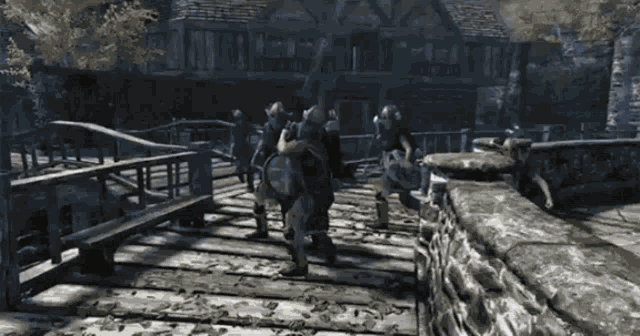[pwnme 2023] Scream Like Viking
Tags: #cryptography #ctf
2023-05-22
Scream Like Viking
Our protagonist John is in a room, he hears some kind of noise, like something resonating. But he doesn’t understand it… Perhaps he could play with his own echoes to guess what the meaning of this famous resonance could be…
nc 51.68.95.78 32773

This article is a write-up for “Scream Like Viking”, a cryptography challenge from PwnMe 2023.
TL;DR
- Get pairs of
(C, N)whereNis recovered by taking GCD of multipleM^e - C - Håstad’s broadcast attack (CRT +
e-th root) on the pairs of(C, N)
Code review
The following source code is given:
from Crypto.Util.number import getPrime, bytes_to_long, long_to_bytes
from Crypto.Util.Padding import pad
e = 17
p = getPrime(512)
q = getPrime(512)
N = p * q
def encrypt(m):
assert 0 <= m < N
c = pow(bytes_to_long(pad(long_to_bytes(m), 50)), e, N)
return int(c)
def encrypt_flag():
with open("/flag.txt", "rb") as f:
flag = f.read()
c = pow(bytes_to_long(pad(flag, 50)), e, N)
return c
def main():
try:
while True:
print("Enter your option (Encrypt or Flag) > ", end='')
cmd = (input().strip())
if cmd == "Encrypt":
print("Enter your integer to encrypt > ", end='')
m = int(input())
c = encrypt(m)
print(str(c) + '\n')
elif cmd == "Flag":
c = encrypt_flag()
print("Flag cipher for you: " + str(c) + '\n')
return
except Exception as e:
print("An error occured:\n", e)
if __name__ == "__main__":
main()
The challenge is a classical RSA encryption oracle, we can either ask for the encrypted flag or encrypt a plaintext of our choosing. The twists here are that the modulus N isn’t given and the exponent e is 17 (pretty smol). When a small e is used to encrypt a message M it’s possible that M^e < N, sidestepping the modulo operation and making it possible to recover M by taking the e-th root of C (the ciphertext). This can be remediated by padding M to make it large enough that the modulo operation happens all the time.
We can’t take the 17-th root of C here because M is padded, thus the modulo operation has taken place, but we could use Håstad’s broadcast attack (hinted at in the challenge title and description) since the flag is encrypted with a different modulus each time. Before that, however, we’ll need to find a way to recover N.
Recovering N
This part is based on this page from CryptoBook, the CryptoHack gitbook. We can’t send -1 to recover N-1 as the message is padded server-side but we can still recover N by using pairs of messages and encrypted messages.
The general idea is the following:
C = M^e [N] <=> C + kN = M^e (with k in Z)
<=> kN = M^e - C
Thus:
GCD(M1^e - C1, M2^e - C2) = GCD(k1 * N, k2 * N) = aN
a = 1 if k1 and k2 are coprime but if they aren’t we can repeat the operation with new pairs of (M, C) until they are. The following function implements this part of the solution.
def recover_n(pairs):
return reduce(gmpy2.gcd, [gmpy2.mpz(pow(pt, e) - ct) for pt, ct in pairs])
Håstad’s broadcast attack
NB: Håstad’s broadcast attack is a Coppersmith’s attack (based on the Coppersmith method, used to find zeros of polynomials) and its general case uses the LLL algorithm. Latices are completely out of the scope of this write-up so the “simple version” of the algorithm is preferred.
The simple version has two key parts: first, using the Chinese Remainder Theorem to recover flag^e and second, taking its e-th root to recover the flag. The fact that the flag is padded changes nothing as the padding is deterministic.
This write-up won’t explain in detail the Chinese Remainder Theorem (a good explanation can be found here) but the gist of it is that given the following, we can recover x:
c1 = x [n1]
c2 = x [n2]
...
ck = x [nk]
In our case x is flag^e, no more moduli to deal with. All that’s left now is to take the e-th root of flage^e to recover the flag.
pt_17 = crt(N, C)[0] # N is an array of moduli and C is an array of corresponding ciphertexts
pt, _ = gmpy2.iroot(pt_17, e)
Conclusion
Below is the final commented solve script.
from pwn import *
context.log_level='WARNING'
from Crypto.Util.number import long_to_bytes, bytes_to_long
from Crypto.Util.Padding import pad, unpad
from sympy.ntheory.modular import crt
from functools import reduce
import gmpy2
e = 17
def recover_n(pairs: list) -> int:
'''
Recovers N from pairs of (pt, ct).
N = GCD(M1^e - C1, GCD(M2^e - C2, GCD(..., GCD(Mn-1^e - Cn-1, Mn^e - Cn))))
'''
return reduce(gmpy2.gcd, [gmpy2.mpz(pow(pt, e) - ct) for pt, ct in pairs])
C, N = [], []
while True:
r = remote('51.68.95.78', 32773)
#r = process(['python3', 'scream_like_viking.py'])
# ---------------------- recover N ----------------------
pairings = []
for _ in range(10): # generate 10 pairs of (pt, ct)
# 10 is a perfectly arbitrary number
r.recvuntil(b'> ')
r.sendline(b'Encrypt')
r.recvuntil(b'> ')
m_ = os.urandom(64)
r.sendline(str(bytes_to_long(m_)).encode())
c_ = int(r.recvline())
pairings.append([bytes_to_long(pad(m_, 50)), c_])
n = recover_n(pairings) # recover n
r.recvuntil(b'> ')
r.sendline(b'Flag')
r.recvuntil(b':')
flag_ = int(r.recvline()) # recover flag
C.append(flag_)
N.append(n)
r.close()
# -------------- Håstad's broadcast attack --------------
pt_17 = crt(N, C)[0] # CRT to recover M^17
pt, _ = gmpy2.iroot(pt_17, e) # (M^17) ^ 1/17
# checking for flag syntax is bloat, it'll be printed eventually anyway
print(long_to_bytes(pt))
'''
$ python3 solve.py
b'\x11\xb6<\xe8\xbc#o\xbf'
b'\x01\n\xc5%\x00^\xd6[\x94/\x05\xb7\x89\xb4\xe5-'
b'\x15\xa1\xc8\x18\xbei\xf9\x03\xc58\x85\xe3qjV\x98\tav\xd843U'
b'\x01\x98\xd1\x83\xc1@\xcc\x96\x94\xa3\x00r\xa7+ok\xf5\x81\xb7\xc7\xc9}c\x148\xb5\x9d\x88A\x05m'
b'\x1a\x82{cC\x1b\x16\x0f\x0e\xd5e3o\xc7.\xf9\xc1\xf9z\x93\x1b+s<\xacLW\xbf\xbe\xf8\xa1\xfa\xb6BN\xaan\xaa'
b'\x02\x07\xd9\x83_\xf7\x11\xc7\x8d\x1c=\xee\x98mo\xf5v\x8c\x07\xdd\xbc\xab\xbf\xff\xa7\x8fG\x95\t\xb2\xec\xe2\xd7b9[\x8a%;c\x1a!\x91\xa3\x1e\t'
b'PWNME{3e851a6cc5525581446cad5694185b99}\n\n\n\n\n\n\n\n\n\n\n'
^C
'''